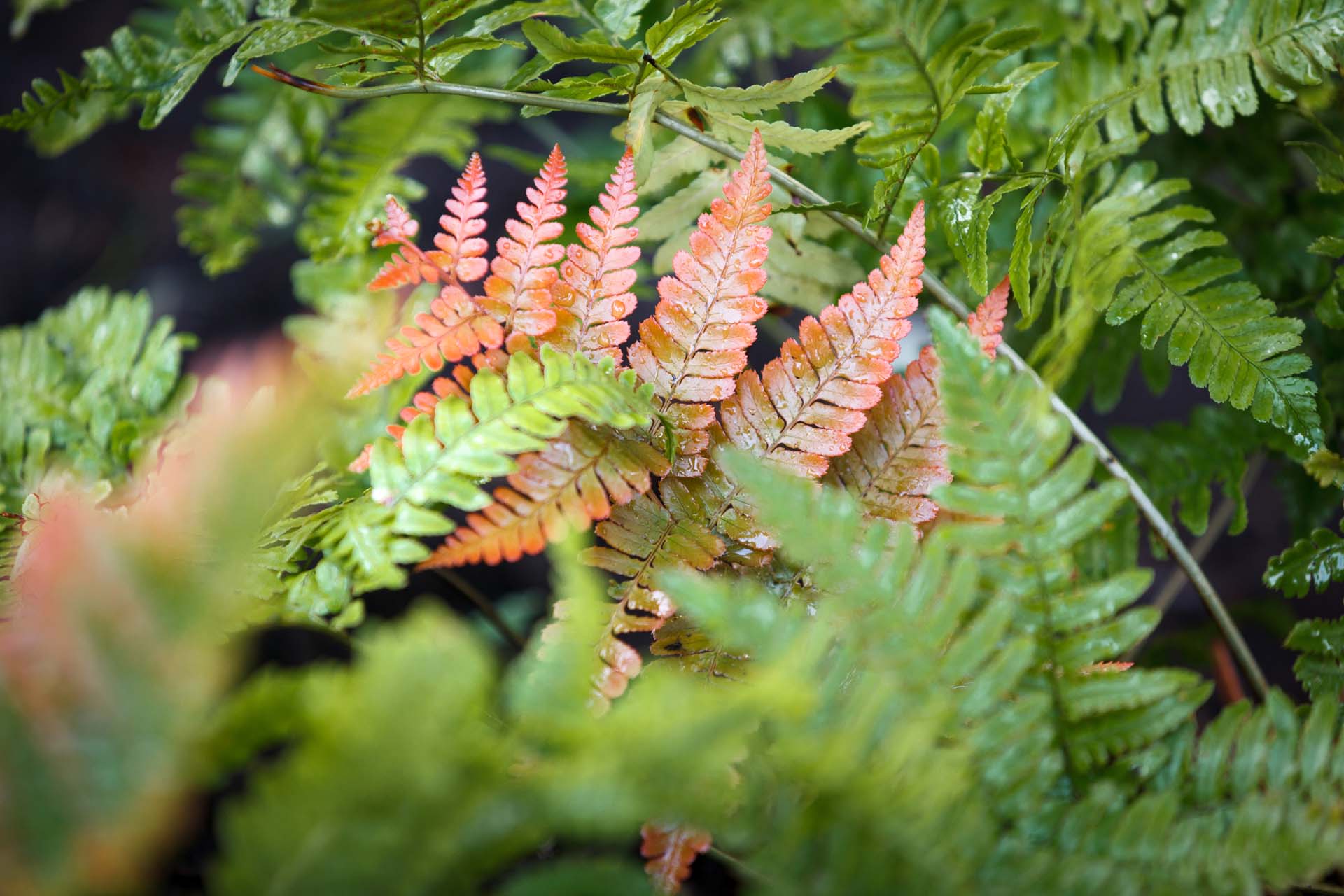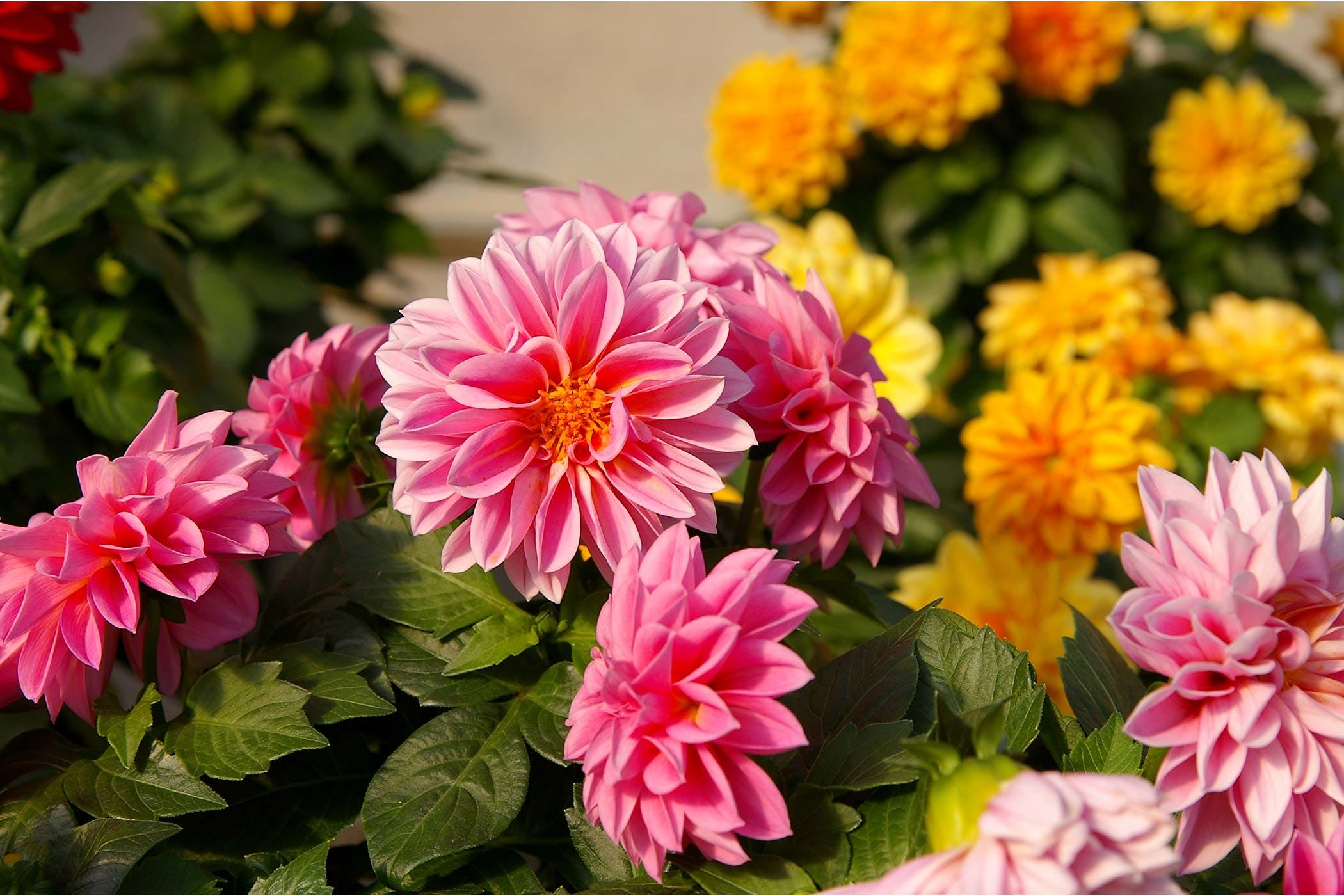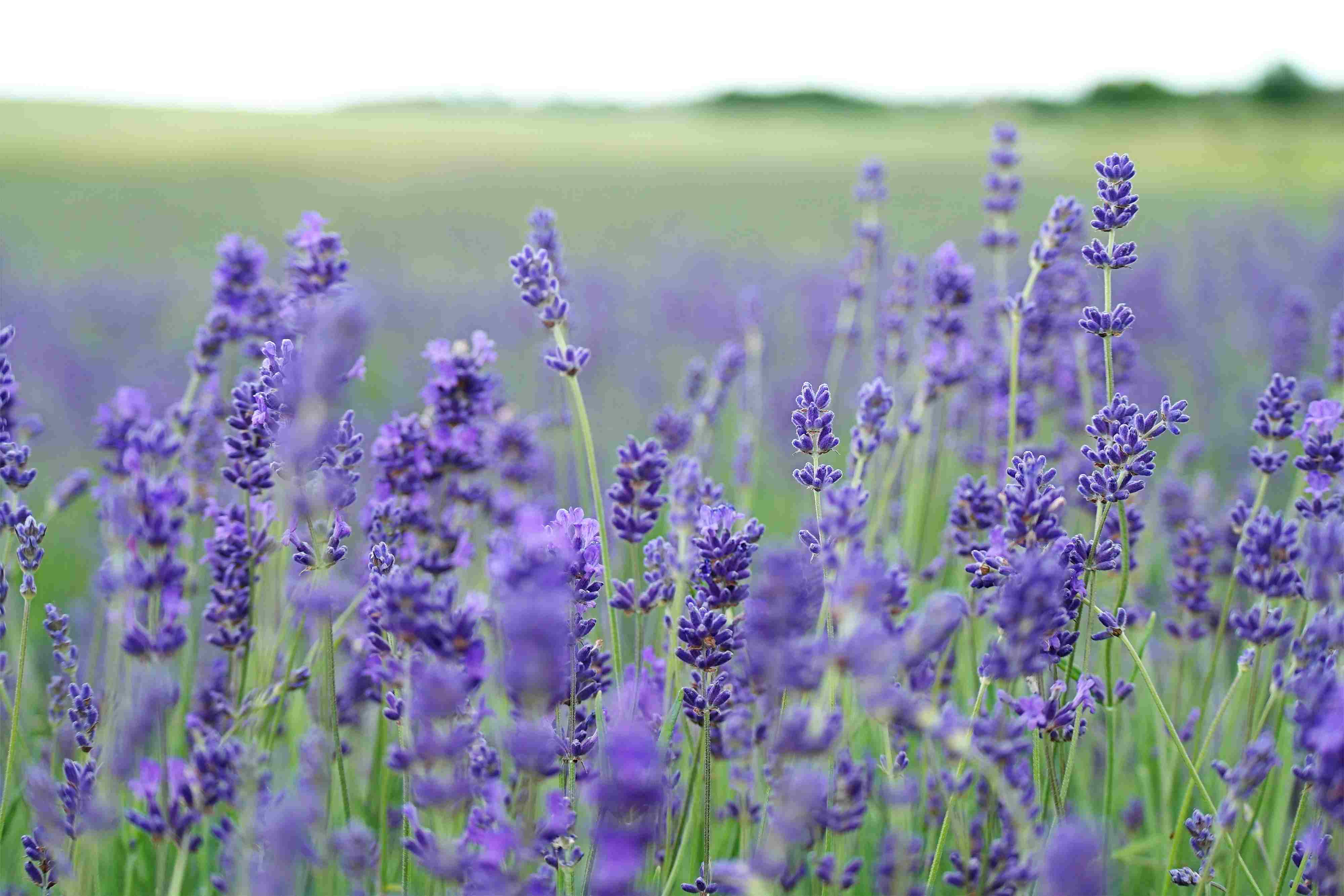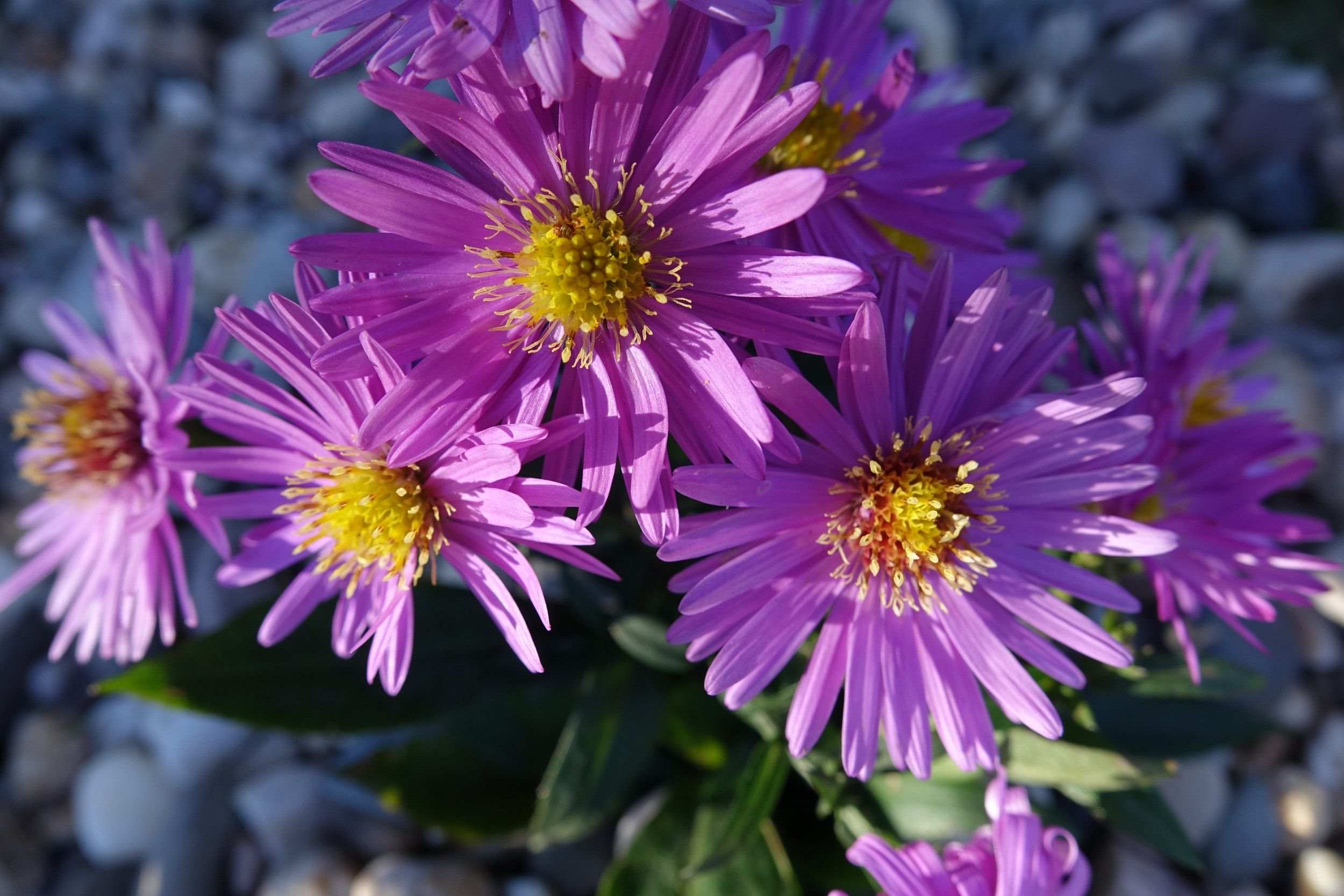Home>Gardening Techniques>Seasonal Gardening>What Are Annuals And Perennials
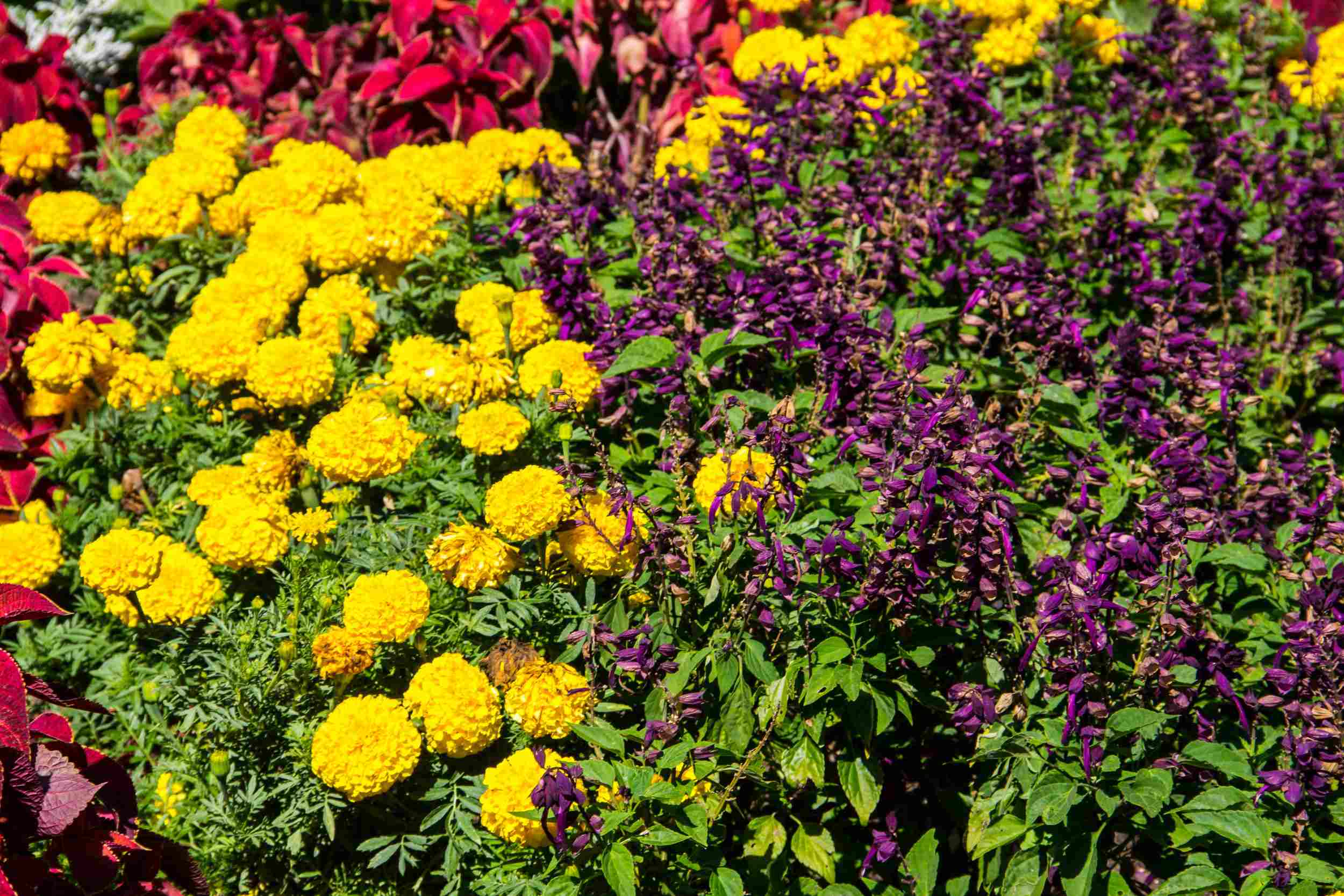

Seasonal Gardening
What Are Annuals And Perennials
Modified: January 22, 2024
Discover the difference between annuals and perennials in seasonal gardening. Choose the right plants for each season and create a stunning garden all year round.
(Many of the links in this article redirect to a specific reviewed product. Your purchase of these products through affiliate links helps to generate commission for Chicagolandgardening.com, at no extra cost. Learn more)
Table of Contents
Introduction
Welcome to the world of seasonal gardening! Whether you are a novice gardener or have been tending to plants for years, understanding the difference between annuals and perennials is essential. Knowing their characteristics, advantages, and popular examples will help you make informed decisions when planning and planting your garden.
Seasonal gardening allows you to create stunning displays of color and texture throughout the year. By carefully selecting the right plants for your garden, you can ensure a continuous and ever-changing landscape that brings joy and beauty to your outdoor space.
In this article, we will explore the fascinating world of annuals and perennials. We will define these two terms, delve into their unique characteristics, discuss the advantages of growing each, and provide you with some popular examples of both annual and perennial flowers. By the end of this article, you will have a clearer understanding of which types of plants are best suited for your gardening goals.
Whether you desire a burst of vibrant color that lasts for a single season or a garden that evolves and grows more beautiful with each passing year, understanding the differences between annuals and perennials is crucial. So let’s dive in and explore the world of seasonal gardening!
Definition of Annuals and Perennials
Before we delve into the characteristics and advantages of annuals and perennials, let’s start by understanding what these terms actually mean.
Annuals: Annual plants complete their life cycle, from seed to flower to seed again, within a single growing season. This means that they sprout, grow, flower, produce seeds, and die within a year. Annuals are known for their ability to provide vibrant, show-stopping colors and abundant blooms during their short lifespan.
Perennials: In contrast, perennial plants have a longer life cycle. They are plants that can live for multiple years and bloom year after year. Perennials typically have a period of dormancy during the winter, where they die back to the ground and store nutrients in their roots to survive until the following spring. They then emerge from the ground and begin growing and blooming again.
It’s important to note that while perennials live for more than one year, they may not necessarily bloom for the entire year. Different perennial plants have different bloom times, with some flowering in spring, others in summer, and some even in the fall.
Now that we have a clear understanding of the basic definitions of annuals and perennials, let’s explore their distinctive characteristics and what sets them apart in terms of growth, maintenance, and longevity.
Characteristics of Annuals
Annuals are known for their vibrant and abundant blooms, making them a popular choice for adding instant color to gardens and landscapes. Here are some key characteristics that distinguish annual plants:
- Life Cycle: Annuals complete their entire life cycle, from seed to flower to seed, within a single growing season. This means that they have a relatively short lifespan compared to perennials.
- Growth Habit: Annuals typically have a fast growth rate, allowing them to quickly establish and produce flowers within weeks of planting. This rapid growth ensures a continuous display of color throughout the season.
- Flowering Period: Annuals are known for their long and prolific flowering periods. They typically bloom from late spring to early fall, adding bursts of vibrant color to the garden for several months.
- Color Variety: Annuals offer an incredible array of colors and hues, ranging from bold and vibrant to soft and pastel. This diversity allows gardeners to create stunning displays and experiment with different color combinations.
- Low Maintenance: Many annuals are easy to care for, requiring minimal maintenance. They are generally adaptable and can tolerate a wide range of soil conditions and climates.
- Flexibility: Since annuals complete their life cycle in a single season, they provide gardeners with the flexibility to change their garden design and flower combinations each year.
Annuals are a fantastic choice for gardeners looking to add instant color and visual impact to their landscapes. Whether you prefer bold, eye-catching blooms or delicate, wispy flowers, annuals offer a wide range of options to suit your preferences and design style.
Advantages of Growing Annuals
There are several advantages to choosing annuals for your garden. These plants offer unique benefits that make them a popular choice among gardeners. Here are some advantages of growing annuals:
- Instant Color: One of the biggest advantages of annuals is their ability to provide instant and abundant color. They quickly establish and bloom, adding vibrant splashes of hues to your garden.
- Continuous Bloom: Annuals have long flowering periods, often blooming from spring to fall. This means you can enjoy a constant display of beautiful flowers throughout the entire growing season.
- Design Flexibility: Annual plants allow you to experiment with different flower combinations and garden designs each year. Since they complete their life cycle within a season, you have the freedom to change and redefine your garden style annually.
- Easy to Grow: Many annuals are known for their adaptability and low maintenance requirements. They are generally easy to grow and can tolerate a variety of soil conditions and climates.
- Quick Results: Annuals have a fast growth rate, which means you get to enjoy their blooms within a relatively short period after planting. This quick turnaround time is ideal if you want to see immediate results in your garden.
- Cost-Effective: Compared to perennials, annual plants are often more budget-friendly. They are readily available from nurseries and garden centers at affordable prices, allowing you to create a stunning garden without breaking the bank.
Whether you’re looking to create a vibrant flowerbed, fill containers with pops of color, or add temporary beauty to an outdoor event, annuals offer numerous advantages. Their instant color, continuous bloom, and flexible design options make them a fantastic choice for gardeners seeking eye-catching and dynamic landscapes.
Popular Annual Flowers
There is a wide range of annual flowers available, each with its own unique beauty and characteristics. These popular annuals are beloved by gardeners for their stunning blooms and ability to bring life and color to any garden. Here are some of the most popular annual flowers:
- Marigolds: Marigolds are known for their vibrant yellow, orange, and red blooms. They are easy to grow, pest-resistant, and attract beneficial insects to the garden.
- Petunias: Petunias are available in a variety of colors and sizes, from cascading trailing varieties to compact mounding ones. They bloom profusely and are perfect for adding a splash of color to hanging baskets and containers.
- Zinnias: Zinnias are popular for their bright and bold daisy-like flowers in various sizes and colors. They are heat-tolerant and attract butterflies to the garden, making them a favorite among pollinator enthusiasts.
- Impatiens: Impatiens are shade-tolerant annuals that produce flowers in shades of pink, purple, white, and red. They are great for adding color to shaded areas of the garden.
- Geraniums: Geraniums are classic annuals that are widely recognized for their clusters of colorful flowers and aromatic foliage. They come in a range of colors, including red, pink, white, and salmon.
- Cosmos: Cosmos produce delicate and daisy-like flowers in shades of pink, white, and purple. They are easy to grow from seed and create a beautiful display in borders and cottage-style gardens.
These are just a few examples of popular annual flowers, but the options are truly endless. Other noteworthy annuals include sunflowers, pansies, begonias, and celosias.
When selecting annual flowers for your garden, consider factors such as sunlight exposure, soil conditions, and your personal preferences. Be sure to create a well-rounded mix of colors, heights, and bloom times to ensure a visually appealing and dynamic display in your garden throughout the growing season.
Characteristics of Perennials
Perennials are a diverse group of plants that offer long-lasting beauty and charm to gardens. Understanding their key characteristics will help you appreciate their unique qualities and plan your garden design accordingly. Here are some defining characteristics of perennials:
- Longevity: Perennials have a longer lifespan compared to annuals. They can live for more than two years and continue to bloom and grow each year.
- Dormancy: Perennials have a period of dormancy during the winter. They die back to the ground and hibernate, storing nutrients in their roots to survive the cold months. In spring, they emerge from the ground and begin growing again.
- Bloom Time: Different perennials have different bloom times, with some flowering in spring, others in summer, and a few even blooming in the fall. This diversity allows for continuous color and visual interest throughout the growing season.
- Variety of Forms: Perennials come in a variety of forms, including herbaceous perennials (non-woody plants), woody perennials (shrubs and trees), and bulbs. This diversity offers a wide range of textures, foliage, and flower shapes to choose from.
- Increased Size over Time: Perennials generally grow larger and more substantial with each passing year. They gradually expand and fill out, creating lush and well-established plantings in the garden.
- Low Maintenance: Once established, perennials tend to be low maintenance. They require less frequent replanting compared to annuals and often have fewer pest and disease issues.
Perennials provide the backbone of a garden, adding permanent structure and enduring beauty. Their ability to return year after year, combined with their wide range of forms and bloom times, makes them essential components in any well-designed landscape.
Advantages of Growing Perennials
Choosing to grow perennials in your garden offers numerous advantages. These long-lasting plants provide many benefits that make them a favorite among gardeners. Here are some advantages of growing perennials:
- Longevity: Perennials have a longer lifespan compared to annuals. Once established, they can grace your garden with their beauty for several years, saving you the effort and expense of replanting annually.
- Cost-Efficiency: While perennials may require a higher initial investment compared to annuals, their long lifespan makes them a cost-effective choice in the long run. You can enjoy their blooms year after year without needing to purchase new plants.
- Low Maintenance: Perennials often require less maintenance compared to annuals. Once they are established, they typically require less watering, fertilizing, and pruning. This makes them a great choice for busy gardeners or those looking for a more low-maintenance approach.
- Garden Stability: Perennials provide stability and structure to your garden. They create a framework of plants that return each year, anchoring your garden and giving it a sense of continuity and cohesion.
- Environmental Benefits: Perennials provide valuable environmental benefits. Their deep root systems help improve soil structure and prevent erosion. They also attract pollinators, benefitting the overall health and biodiversity of your garden.
- Seasonal Interest: Perennials offer long-lasting seasonal interest. With careful selection, you can have a garden that blooms at different times throughout the year, providing continuous color and visual appeal from spring to fall.
Choosing perennials for your garden allows you to create a beautiful and sustainable landscape that evolves with time. With their longevity, cost-efficiency, low maintenance requirements, and environmental benefits, perennials are an excellent choice for gardeners seeking lasting beauty and functionality.
Popular Perennial Flowers
Perennial flowers are beloved for their enduring beauty and the reliability with which they return year after year. These plants offer a wide range of colors, shapes, and sizes, allowing you to create a garden that blooms with stunning flowers throughout the seasons. Here are some popular perennial flowers to consider for your garden:
- Roses: Roses are iconic perennial flowers known for their timeless beauty and intoxicating fragrance. They come in a variety of types, including shrub roses, hybrid teas, and climbers, and offer a wide array of colors and forms.
- Lilies: Lilies are elegant and eye-catching perennial flowers that come in many different shapes and colors. From the tall and stately Asiatic lilies to the fragrant and showy Oriental lilies, these blooms make a stunning addition to any garden.
- Daylilies: Daylilies are hardy and reliable perennials that offer a profusion of colorful blooms. They come in a wide range of colors and flower forms, and their extended blooming period adds beauty to the garden for several weeks.
- Peonies: Peonies are prized for their large, luxurious blooms and enchanting fragrance. They come in a variety of colors and can be single or double-flowered, making them a favorite choice among gardeners and floral enthusiasts.
- Salvia: Salvia, also known as sage, is a versatile perennial flower that is loved for its vibrant and long-lasting blooms. With tall spikes of purple, blue, red, or white flowers, salvias are attractive to hummingbirds and butterflies.
- Coneflowers: Coneflowers, also known as echinaceas, are native perennials that produce bold and colorful daisy-like flowers. They come in various shades, including pink, purple, white, and orange, and are a favorite among pollinators.
These are just a few examples of popular perennial flowers, but many other noteworthy perennials include irises, daisies, black-eyed Susans, and asters. When choosing perennial flowers for your garden, consider factors such as sunlight requirements, plant size, bloom time, and color scheme to create a well-balanced and visually appealing landscape.
By incorporating these popular perennial flowers into your garden, you can enjoy their enduring beauty and reliability year after year, creating a stunning and ever-evolving display of nature’s wonders.
Annuals vs. Perennials: Which to Choose?
When deciding between annuals and perennials for your garden, it’s important to consider your gardening goals, preferences, and the specific needs of your landscape. Each type of plant offers distinct benefits and considerations. Here are some factors to help you make an informed decision:
- Longevity: If you’re looking for plants that will return year after year and provide long-lasting beauty, perennials are the way to go. They establish a permanent presence in your garden and offer reliable blooms season after season.
- Instant Color: If you want immediate bursts of vibrant color and a constantly changing garden design, annuals are the better choice. They provide instant gratification with their quick growth and abundant blooms, perfect for adding temporary splashes of color.
- Maintenance: Consider the level of maintenance you’re willing to provide. Annuals often require more watering, fertilizing, and replanting, as they complete their life cycle within one season. Perennials, once established, generally require less maintenance, making them a suitable option for those seeking a more low-maintenance garden.
- Design Flexibility: If you enjoy experimenting with different garden designs and flower combinations, annuals are more flexible. You have the freedom to change your garden theme and layout each season, while perennials provide stability and structure to your garden design.
- Cost Considerations: Annuals tend to be more cost-effective upfront, as they are often less expensive than perennials. However, perennials provide long-term value since they return year after year, reducing the need for regular repurchasing.
- Availability: Annuals are readily available at nurseries and garden centers, and they offer a wide variety of choices. Perennials may have a more limited selection depending on the region and climate, and they may require more planning and selection to ensure they are well-suited for your specific landscape.
Ultimately, there is no right or wrong choice between annuals and perennials. The best approach is often a combination of both, as they each offer their own unique benefits. Many gardeners choose to incorporate annuals for instant color and excitement, while relying on perennials for long-lasting beauty and structure.
Consider your specific gardening needs and preferences when making your decision. You can also experiment and evolve your garden over time, incorporating different plants and gradually transitioning to a well-balanced mix of annuals and perennials that suits your desired aesthetic and maintenance level.
Conclusion
Choosing between annuals and perennials is an important decision that can greatly impact the beauty and functionality of your garden. Both types of plants offer unique advantages and considerations that are worth exploring.
Annuals provide instant color, continuous blooms, and design flexibility, making them ideal for gardeners seeking immediate impact and the ability to change their garden theme each year. They are budget-friendly and relatively low maintenance, allowing for easy experimentation and creativity in your garden design.
On the other hand, perennials offer long-lasting beauty, stability, and the satisfaction of seeing familiar blooms return year after year. While they may require more planning and patience, the permanent presence of perennials brings a sense of reliability, structure, and enduring beauty to your garden. They require less maintenance and are a cost-effective choice in the long run.
The decision between annuals and perennials ultimately depends on your gardening goals, preferences, and the specific needs of your landscape. You may choose to combine both types of plants in your garden, capitalizing on the immediate impact of annuals and the lasting charm of perennials.
By understanding the characteristics, advantages, and popular examples of annuals and perennials, you can make informed decisions when selecting plants for your garden. Consider factors such as longevity, maintenance requirements, design flexibility, cost considerations, and availability to create a garden that suits your style and brings you joy throughout the seasons.
So whether you opt for the vibrant and fleeting beauty of annuals or the enduring allure of perennials, seasonal gardening offers a world of possibilities. Get your hands dirty, embrace the wonders of nature, and create a stunning garden that brings you joy and inspiration year after year.
